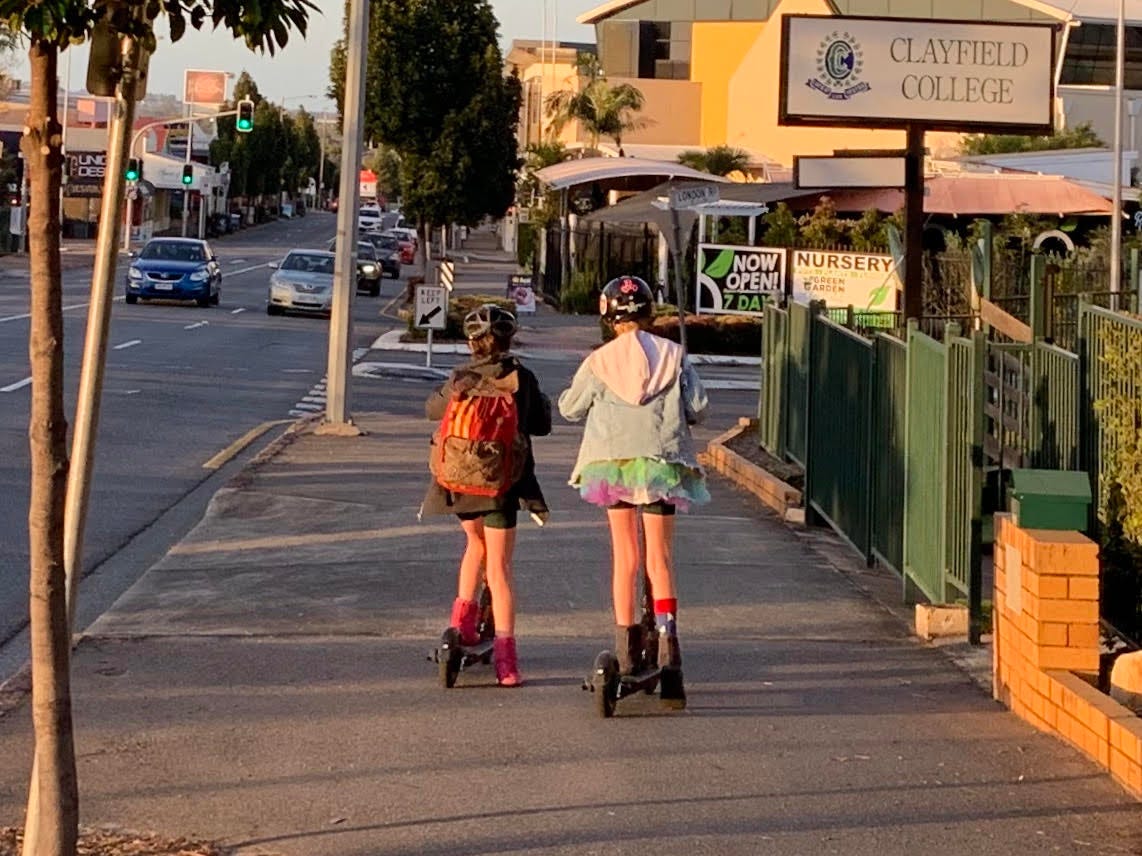Last month was #worldcarfreeday, an event organised by the World Carfree Network, the hub of the global car-free movement. Every year on or around 22 September, cities across the globe celebrate World Car-Free Day, encouraging motorists to give up their cars for a day.

Photo: Getty Images
With vehicle emissions being one of the main sources of outdoor air pollution, particularly in cities, this is an excellent initiative and one we applaud. Ambient air pollution alone caused some 4.2 million deaths in 2016, according to the World Health Organization.
The World Carfree Network says that the World Car-Free Day can be a showcase for just how our cities might look like, feel like, and sound like without cars… 365 days a year. We couldn’t agree more and to prove it, our family has nearly spent a full year without a car.
When we returned from our family gap year and sold Larry the Landcruiser, we chose not to replace him (it) and opted to try living car-free. Coming up on the one year anniversary of making that decision I thought it would be a good time to report on the experiment.
Firstly I should preface this discussion with the fact that we’re fortunate to live close to most things we need. If you didn’t live in a city and even then, reasonably close to the city centre, the decision to live car-free might be too challenging to consider. After taking this all into account we took the plunge and this is how it panned out.

From a professional standpoint we mostly work from shared office space River City Labs in Fortitude Valley about 6km from home. More recently we’ve been working from our new circular economy pop-up shop in the Wintergarden, but that’s only 8 kms from home. There are two train stations and numerous bus stops within a kilometre of home, so getting to work couldn’t be easier.
Whether it’s good management or purely good luck, this all makes living without a car pretty straightforward. In saying that, it’s not always easy, but we’ve made changes to our lives to make it work. Everyone in the family has two feet and a heartbeat and so we’ve been known to walk from time to time. We have bikes for when walking isn’t an option and use buses, trains and ride-sharing services like Uber, Didi and Sheba.
More recently we bought an Inokim electric scooter for each family member. After being regular Lime scooter users upon their introduction, we decided to trial our own e-scooter for a few months. Within weeks we’d decided they were a fun, safe and ecologically friendly transport method and bought another 3; call them our fleet of personal Teslas if you like. E-Scooters are ideal for filling gaps between buses and trains and to get to other forms of transport such as car-sharing services.
Car sharing services such as Car Next Door and Go Get are perfect for those moments when nothing other than a car will do. They are slightly different in how they work, but essentially provide the same service — a fleet of cars spread across the city and suburbs that anyone can hire at any time. Whether it’s for an hour or two to run some errands or a full day to visit family or friends outside the public transport grid, both do the job well.
We prefer Car Next Door and use the service a few times a month. This service allows car owners to rent out their car when it’s not in use; it quite literally enables you to borrow your neighbour’s car (if they’re a participant) and because you only pay for what you use, it’s far more cost effective than owning a car. With most cars only being used for about 5% of their lifespan, we see this as a great way for car owners to unlock more of the underutilised value in the asset and to help people who don’t own cars (like us) get easy, low cost, sporadic use of a motor vehicle when required.
We should point out that while the Car Next Door app and it’s alternatives are good for short distances, they aren’t very cost effective for longer journeys. The all-inclusive hourly charge plus per kilometre fee (fuel, insurance, wear & tear) is great if you’re ducking across town and back, but a 200 kilometre round trip will set you back $100 or more, using even the cheapest cars on their books.
For longer trips we use car hire and fortunately there’s an app for that too. Rentalcars.com gets us a small/medium car for a whole weekend for about the same money as a long single trip using a car sharing service. We don’t do it often, but once a quarter or so we’ll arrange to pick up a hire car on a Friday, drop it back on the Monday and only pay around $100 for the privilege. We even get our insurance at about 20% of what the car hirer would charge via another app.
With RACQ citing even the cheapest car ownership costs at $6000 per annum in their 2019 Private Vehicle Expenses Report, we think we’re ahead of the game by a considerable amount. Even if we’re not that far ahead of the game in terms of costs, we know that we are miles ahead in the environmental stakes and given what we do for a living, that feels good.
Our family’s time without a car has certainly been an experience, especially after being reliant on cars since we were in our late teens. Knowing we can survive without a car has been priceless, as I’m not sure car ownership will be the norm going forward. With the huge environmental price the planet pays for car ownership, I think improved public transport networks combined with personal transportation devices such as bikes & e-scooters and car and ride sharing platforms, owning a car will become less and less desirable.

Will not owning a car become the default? While it seems far-fetched today, I no longer think it’s out of the realms of possibility. Take a look at your car inventory and see what you might be able to live without!!
